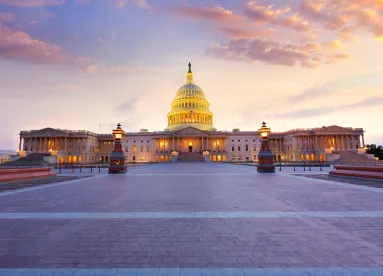The U.S. Mayors convened their 88th Washington, D.C. Winter Meeting and released the 2019 Menino Survey of Mayors, the sixth such survey, reflecting the views of 119 mayors of cities with populations at or above 75,000 residents. The 2019 survey was somewhat unique in that the mayors were surveyed about Opportunity Zones, a federal tax initiative created under the Tax Cut and Job Cuts Act to stimulate local economic growth and development.
While the 2019 Menino report* addresses broad infrastructure priorities, public safety and other policy matters, the key findings relating to newly established Opportunity Zones provide a unique local voice for policy makers.
Following are the Menino Report findings on Opportunity Zones:
“Mayors generally believe the new federal Opportunity Zones program has targeted the right areas, nationally and in their own communities. They are taking the lead in organizing the community to take advantage of their tract designations and are confident in their ability to capitalize on the program. Mayors believe dedicated senior staff and an Opportunity Zone Investment Prospectus will be key.
– Roughly three quarters of cities in the survey sample had eligible census tracts, and two-thirds now have at least one designated opportunity zone, with an average of six per city.
– 51% of mayors believe the new Opportunity Zones program has effectively targeted areas of true economic need nationally. 29% are unsure, suggesting a large minority are unaware or not yet confident the program is working as intended. [Figure 28]
– 65% of mayors say the tracts selected by their governor were either based on their own advice, or are comparable to what the mayor would have picked if they had the choice. [Figure 29]
– Mayors generally believe that designations were driven by a desire on the part of governors to spread them across the state, and were responsive to mayors’ input. Their satisfaction with their own designations does not vary substantially by city size, partisanship of the mayor, or affluence of the community. [Figures 31-34]
– Mayors are generally not concerned that the program will lead to gentrification or residential displacement, including those leading more expensive cities, or that limited funds will ultimately be invested. More than half believe the program will have a large and positive impact on their local economy, with the greatest benefits conferred on outside investors and small businesses and residents currently located in the zones. [Figures 35, 36, and 39]
– The vast majority (75%) of mayors believe they have the capacity to maximize the benefits of their zones. Mayors believe the main mechanisms to maximize the benefits are: dedicated senior staff in city hall (54%) and an Opportunity Zone Investment Prospectus that outlines their community’s priorities and specific opportunities and assets (50%). A third believe supplemental monetary incentives will also be important. [Figures 37 and 41]
– 81% say the city is taking the lead in organizing the community to capitalize on the designations. Most (55%) have tasked their Economic Development Director, or a comparable role in that department, with the job. [Figures 40 and 42]
– When it comes to their own role, 43% of mayors believe their job is to serve as an advocate for their city and its zones, and promote them to investors. [Figure 43]”
These timely local views will be significant in the ongoing review of the Opportunity Zones program at the federal level by the Trump Administration and tax-writing Committees.
* Opinions expressed in the Menino Report do not reflect those of Greenberg Traurig (GT) or its clients. GT has not independently verified the data contained in the report.



 />i
/>i
